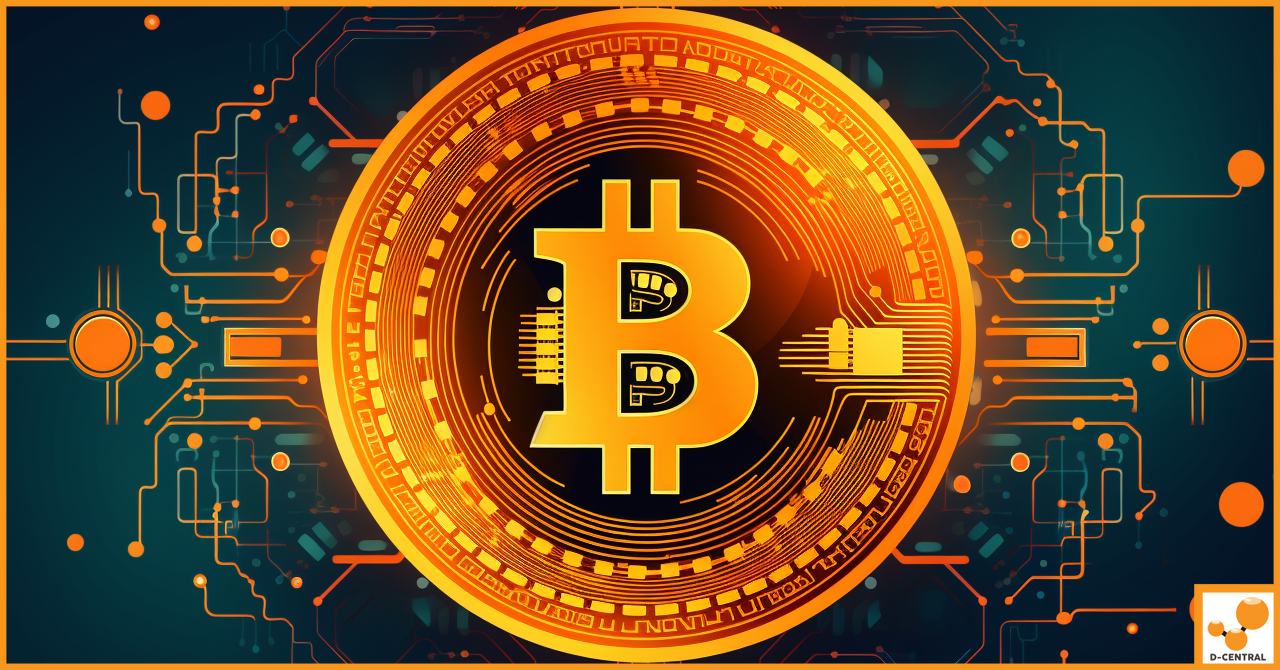
On-Site Antminer Repairs: How to Maintain Your Hardware Within Manufacturer Standards
In the intricate world of Bitcoin mining, the efficiency and longevity of mining hardware stand as pivotal factors that directly
4479 Desserte Nord Autoroute 440, Laval, QC H7P 6E2

In the ever-evolving landscape of digital currencies, Bitcoin stands as a pioneering force, reshaping how we perceive and engage with financial transactions. At the heart of Bitcoin’s revolutionary technology is its transaction process, a complex yet fascinating system that ensures security and transparency in every exchange. Each Bitcoin transaction undergoes a critical process known as confirmation, a step that solidifies its legitimacy and records it indelibly on the blockchain, the digital ledger that underpins Bitcoin.
However, not all transactions smoothly sail through this confirmation process. Some find themselves in a state of limbo, known as unconfirmed transactions. These transactions represent a unique aspect of Bitcoin’s network, one that is often shrouded in mystery and misunderstanding. What exactly happens to these unconfirmed transactions? Why do they occur, and what are their implications for Bitcoin users?
As a leader in the realm of Bitcoin mining and transaction management, D-Central Technologies offers a deep well of knowledge and expertise. We understand the intricacies of Bitcoin transactions, from their inception to confirmation, and even the peculiarities of those that remain unconfirmed. In this comprehensive exploration, we aim to demystify unconfirmed Bitcoin transactions, shedding light on their causes, consequences, and the solutions available to navigate these murky waters. With D-Central Technologies, you’re not just observing the Bitcoin ecosystem; you’re equipped to understand and engage with it effectively.
Bitcoin transaction processing is the backbone of the entire bitcoin network, ensuring that value can be securely transferred between users. When a user initiates a bitcoin transaction, it is immediately broadcast to the entire network and stored in the memory pool (mempool) of multiple nodes. This mempool acts as a waiting room for all pending transactions, where each transaction remains unconfirmed until it is selected by a miner to be included in a block.
The process of moving from an unconfirmed to a confirmed transaction depends on several factors. One of the most important is the transaction fee attached to the transaction. Miners are incentivized to prioritize transactions with higher fees, as this maximizes their rewards. At the same time, the block size limit restricts how many transactions can be included in each block, making competition for block space especially fierce during periods of high demand.
Network congestion can further complicate transaction processing. When the network is busy, the mempool fills up, and transactions with lower fees may remain unconfirmed for longer periods or even be dropped if they are not included in a block within a certain timeframe. This makes it essential for users to understand how transaction fees, network congestion, and the block size limit interact to affect the status of their transactions.
By grasping the fundamentals of bitcoin transaction processing, users can make informed decisions about when and how to send transactions, how much fee to attach, and how to avoid common pitfalls like delayed or dropped transactions. This knowledge is key to navigating the bitcoin network efficiently and ensuring that your transactions are confirmed in a timely manner.
Bitcoin transactions are the lifeblood of the cryptocurrency network, representing the transfer of value between different parties. These transactions are fundamentally digital exchanges, where Bitcoin owners authorize the transfer of a certain amount of BTC (Bitcoin’s currency unit) to another individual’s Bitcoin address. The process begins with the transaction initiator signing off with their private key, a unique digital signature that provides cryptographic proof of ownership.
Once the first transaction is initiated, it is broadcasted to the Bitcoin network, where it awaits validation. At this point, the transaction enters the mempool, and each node on the network maintains its own version of the mempool. Before a transaction is accepted into the mempool, the network checks that the sender has sufficient funds to cover the transaction amount. This is where miners come into play. Miners are network participants who use powerful computers to solve complex mathematical puzzles, a process that validates transactions and adds them to the blockchain. Each transaction is grouped with others into a block, which miners work to validate.
Definition of Confirmed vs. Unconfirmed Transactions
A transaction is considered ‘confirmed’ once it is successfully included in a block on the blockchain. The more blocks that are added on top of the block containing the transaction (each block takes about 10 minutes to be mined), the more irreversible the transaction becomes. This is because altering any information in a previous block would require recalculating the proof-of-work for it and all subsequent blocks, a computationally impractical task.
In contrast, an ‘unconfirmed’ transaction has been broadcast to the network but not yet included in a block. These transactions reside in the mempool (memory pool), a sort of waiting area for all unverified transactions. Unconfirmed transactions are in a pending status while they await inclusion in a block. The time a transaction stays in the mempool depends on several factors, including network congestion and transaction fees.
Role of the Blockchain in Transaction Confirmation
The blockchain plays a pivotal role in the confirmation of transactions. It is a decentralized and distributed ledger that records all Bitcoin transactions in a secure and immutable manner. Each block in the blockchain contains a set of transactions that have been verified and confirmed by miners. Once a block is added to the blockchain, the transactions within it are considered confirmed.
The blockchain’s decentralized nature means that no single entity has control over the transaction process. Instead, consensus is reached among network participants, which adds to the security and reliability of Bitcoin transactions. This decentralized verification process is what makes Bitcoin resistant to fraud and censorship.
In summary, understanding how Bitcoin transactions work, the distinction between confirmed and unconfirmed transactions, and the role of the blockchain in this process is essential for anyone engaging with Bitcoin, whether for investment, mining, or daily transactions. Users can monitor the transaction status to track confirmation progress and take appropriate actions if needed. As experts in Bitcoin mining and transaction management, D-Central Technologies provides valuable insights and services to help users navigate this complex yet fascinating digital landscape.
In the Bitcoin network, not all transactions achieve confirmation instantly. There are several reasons why transactions may remain unconfirmed, lingering in the mempool longer than anticipated. Understanding these causes is crucial for anyone engaging in Bitcoin transactions.
Low Transaction Fees: How Fees Influence Miner Priorities
One of the primary reasons a transaction remains unconfirmed is due to low transaction fees. In the Bitcoin network, transaction fees are not fixed; users can choose how much fee to attach to their transactions. These fees serve as an incentive for miners to prioritize and confirm transactions. Miners are more likely to select transactions with higher fee rates for inclusion in the next block because it maximizes their profit.
When the network is busy, the competition for block space increases, and miners naturally prioritize transactions with higher fees and higher fee rates. Consequently, if a user attaches a low fee or selects a lower fee to save costs, their transaction risks being overlooked or delayed, as miners opt for more lucrative transactions. Transactions with low fees and lower fee rates are more likely to remain unconfirmed or be dropped from the mempool, especially during times of network congestion. This dynamic creates a sort of market for block space, where users must balance the urgency of their transaction with the fee they are willing to pay, accepting that choosing a lower fee may result in longer waiting periods for confirmation.
Network Congestion: The Impact of High Transaction Volumes
Network congestion occurs when there is a high volume of transactions waiting to be confirmed, exceeding what the network can process in a timely manner. Bitcoin’s blockchain has a limited capacity for processing transactions, primarily due to the block size limit and the average time it takes to mine a block (approximately 10 minutes).
During periods of high transaction activity, such as during price rallies or market crashes, the number of transactions can overwhelm the network, leading to a backlog. This congestion results in longer waiting times for confirmation, especially for transactions with lower fees. In such scenarios, miners must choose between many other transactions in the mempool, and even transactions with average fees might face significant delays.
Transaction Complexity: The Role of Transaction Structure in Confirmation Times
The complexity of a Bitcoin transaction can also affect its confirmation time. Transactions vary in size and complexity; some involve simple transfers of Bitcoin between two addresses, while others might include multiple inputs and outputs or complex scripts.
Complex transactions take up more space in a block and require more processing power to validate. As a result, they can be deprioritized by miners in favor of simpler transactions that are less resource-intensive. This means that users engaging in complex transactions, such as those consolidating many small inputs or executing multifaceted smart contracts, might experience longer wait times for their transactions to be confirmed.
Understanding the factors that lead to unconfirmed transactions is essential for effectively navigating the Bitcoin network. At D-Central Technologies, we provide the expertise and resources to help users optimize their transaction strategies, whether it’s through selecting appropriate fees, timing transactions to avoid network congestion, or simplifying transaction structures. Our goal is to ensure that your experience with Bitcoin is as seamless and efficient as possible.
Network congestion is a critical factor that can significantly impact the confirmation time of unconfirmed transactions on the bitcoin network. When there is a surge in transaction activity—such as during market rallies or periods of high demand—the mempool can become crowded with a backlog of transactions waiting for verification. In these situations, miners tend to prioritize transactions with higher transaction fees, leaving those with lower transaction fees at the back of the line.
As a result, transactions with lower fees may remain unconfirmed for an extended period, sometimes even being dropped from the mempool if they are not processed within a certain timeframe. This can be frustrating for users who expect quick transaction processing, especially when network congestion is high.
To navigate these challenges, users can leverage online tools that estimate the optimal transaction fee required for faster confirmation based on current network conditions. Additionally, advanced techniques like replace-by-fee (RBF) and child-pays-for-parent (CPFP) allow users to increase the priority of their transactions after they have already been broadcast. RBF enables users to resend the same transaction with a higher fee, while CPFP allows recipients to create a new transaction with a higher fee that incentivizes miners to confirm both the original and the new transaction together.
By understanding the impact of network congestion on unconfirmed transactions and utilizing available tools and strategies, users can better manage their transaction processing, avoid unnecessary delays, and ensure their transactions are confirmed as quickly as possible.
The creation of the next block is a pivotal moment in the journey of any bitcoin transaction. When a miner successfully mines a new block, they select a set of unconfirmed transactions from the mempool to include in that block. The selection process is largely determined by the transaction fee—transactions offering a higher fee are prioritized, as miners seek to maximize their earnings.
Once a transaction is included in a block, it is considered confirmed and becomes a permanent part of the blockchain. The confirmation status of a transaction can be easily checked using a block explorer, which provides details such as the transaction hash, block number, and the number of confirmations received. This transparency allows users to track the progress of their transactions in real time and verify when their funds are available for use.
If a transaction remains unconfirmed for an extended period, users have options to improve their chances of confirmation. Techniques like replace-by-fee (RBF) allow the sender to resend the transaction with a higher fee, while child-pays-for-parent (CPFP) enables the recipient to create a new transaction with a higher fee, encouraging miners to confirm both transactions together.
Understanding how the next block is formed and how transactions are selected for inclusion empowers users to make informed decisions about transaction fees and timing. By monitoring the confirmation status and utilizing available strategies, users can achieve faster confirmation times and ensure their bitcoin transactions are processed efficiently on the network.
Unconfirmed transactions in the Bitcoin network, while a common occurrence, can have significant implications for users and businesses. Understanding these consequences is crucial for anyone engaged in Bitcoin transactions, whether for personal use or as part of business operations.
Potential Delays in Transaction Completion
The most immediate impact of an unconfirmed transaction is the delay in completion. When a transaction remains unconfirmed, the intended recipient cannot access or use the transferred bitcoins. This delay can range from a few minutes to several hours, or even days in extreme cases. For users expecting quick transfers, such as in the case of time-sensitive payments or trades, these delays can be more than just an inconvenience; they can disrupt plans and expectations.
Impact on Users and Businesses Relying on Timely Transactions
For businesses that rely on Bitcoin transactions, delays caused by unconfirmed transactions can have more far-reaching consequences. E-commerce businesses accepting Bitcoin payments may face challenges in order fulfillment, leading to customer dissatisfaction and potential loss of business. Similarly, individuals or businesses trading cryptocurrencies might miss out on favorable market conditions due to delayed transactions, resulting in financial losses or missed opportunities.
In scenarios where transactions are tied to contractual obligations or time-sensitive deals, unconfirmed transactions can lead to breaches of agreement, eroding trust and potentially leading to legal complications. This is particularly relevant in industries where blockchain technology is used for smart contracts and other time-bound processes.
Risks Associated with Prolonged Unconfirmed Transactions
Prolonged unconfirmed transactions carry additional risks. There’s a possibility that a transaction might eventually be dropped from the mempool if it remains unconfirmed for too long, typically after 72 hours. If a transaction fails due to being dropped from the mempool or rejected by the network, the funds may return to the sender. This means the transaction effectively gets canceled, and the bitcoins return to the sender’s wallet. However, this outcome is not guaranteed, and the uncertainty can be problematic.
Moreover, unconfirmed transactions can be susceptible to double-spending, where the sender attempts to spend the same bitcoins in another transaction. While the Bitcoin network’s design makes successful double-spending difficult, the risk is not entirely negligible, especially with transactions that have been unconfirmed for an extended period.
At D-Central Technologies, we understand the complexities and challenges posed by unconfirmed transactions. Our expertise in Bitcoin mining and transaction management equips us to provide guidance and solutions to mitigate these risks. Whether it’s through strategic transaction planning, optimizing transaction fees, or understanding the best times to transact, we are here to ensure that your Bitcoin transactions are as smooth and reliable as possible.
Navigating the realm of unconfirmed Bitcoin transactions can be challenging, but there are several effective strategies to address this issue. Understanding and utilizing these methods can significantly enhance the likelihood of a transaction being confirmed more swiftly.
Increasing Transaction Fees: Making Your Transaction Appealing to Miners
One of the most straightforward solutions is to increase the transaction fee. Higher fees make transactions more appealing to miners, as they prioritize transactions that are more profitable. When initiating a transaction, users should consider the current state of the network and adjust their fees accordingly. Tools and online services are available to gauge the optimal fee based on current network conditions. Paying a higher fee can significantly reduce the waiting time for confirmation, especially during periods of network congestion.
Replace-By-Fee (RBF) Protocol: A Flexible Solution
The Replace-By-Fee (RBF) protocol is a feature available in many Bitcoin wallets that allows users to replace an unconfirmed transaction with a new one, typically with a higher fee. This method is particularly useful if the initial transaction fee was set too low in relation to the current demand on the network. To use RBF, the original transaction must be marked as replaceable; this can usually be done within the wallet interface when creating the transaction. If the transaction remains unconfirmed, the user can issue a new transaction with a higher fee, which is more likely to be picked up by miners.
Child-Pays-For-Parent (CPFP): Accelerating Confirmation for Recipients
Child-Pays-For-Parent (CPFP) is a tactic used by the recipients of unconfirmed transactions. In this method, the recipient creates a new transaction – the ‘child’ – that spends the outputs of the unconfirmed ‘parent’ transaction. By attaching a high fee to the child transaction, both transactions become attractive to miners. The rationale is that for the child transaction to be confirmed, the parent transaction must also be confirmed. This method is particularly useful in scenarios where the sender is unable or unwilling to increase the transaction fee themselves.
While unconfirmed transactions can be a source of frustration in the Bitcoin network, there are several strategies available to expedite their confirmation. At D-Central Technologies, we provide the expertise and support to help users navigate these solutions effectively. Whether it’s through advising on appropriate transaction fees, assisting with the use of the RBF protocol, or guiding through the CPFP process, our goal is to ensure your Bitcoin transactions are confirmed in a timely manner, minimizing disruptions and maximizing efficiency.
Engaging in Bitcoin transactions requires not only an understanding of how the system works but also a strategic approach to ensure smooth and timely confirmations. Here are some best practices that can help users navigate the Bitcoin network more effectively.
Tips for Ensuring Faster Transaction Confirmations
Importance of Monitoring the Bitcoin Network’s Status Keeping an eye on the current state of the Bitcoin network can inform your transaction strategy. During times of high congestion, transaction fees can skyrocket, and confirmation times can increase significantly. By monitoring the network, you can choose the most opportune moments to transact, potentially saving on fees and avoiding delays.
Tools and Resources for Tracking Transaction Confirmations
By adhering to these best practices and utilizing available tools and resources, users can significantly enhance their Bitcoin transaction experience. At D-Central Technologies, we are committed to providing our clients with the knowledge and tools necessary to navigate the Bitcoin network efficiently. Whether you’re a seasoned trader or new to the world of cryptocurrency, our expertise can help you optimize your transaction strategies for better, faster results.
In this comprehensive exploration of unconfirmed Bitcoin transactions, we have delved into the various facets that make up this critical aspect of the Bitcoin network. From understanding the nature of Bitcoin transactions and the reasons behind their unconfirmed status to exploring effective solutions and best practices, this guide has aimed to provide a thorough understanding of a complex yet essential topic in the world of cryptocurrency.
Navigating the Bitcoin network requires more than just a basic understanding of how transactions work; it demands an in-depth knowledge of what happens when transactions don’t go as planned. Unconfirmed transactions are not just a minor inconvenience; they can have significant implications for financial decisions and business operations. Understanding how to manage and mitigate the issues surrounding unconfirmed transactions is crucial for anyone looking to operate effectively within the Bitcoin ecosystem.
At D-Central Technologies, we are dedicated to empowering our clients with the knowledge and tools necessary to navigate the Bitcoin network confidently. Our expertise in Bitcoin mining and transaction management positions us uniquely to offer guidance and support in this rapidly evolving domain. Whether you’re facing challenges with unconfirmed transactions or looking to optimize your Bitcoin operations, our team is here to assist.
We encourage you to reach out to D-Central Technologies for further assistance and to explore the range of services we offer. With our help, you can transform your Bitcoin transactions from a source of uncertainty into an asset for your financial or business endeavours.
What is an unconfirmed Bitcoin transaction?
An unconfirmed Bitcoin transaction is one that has been broadcast to the network but has not yet been included in a block on the blockchain. These transactions remain in the mempool, awaiting validation and confirmation by miners.
Why do Bitcoin transactions remain unconfirmed?
Bitcoin transactions may remain unconfirmed due to factors like low transaction fees, high network congestion, and complex transaction structures. Lower fees can make a transaction less appealing to miners, while high congestion can result in backlogs, delaying confirmations.
What is the Replace-By-Fee (RBF) protocol?
The Replace-By-Fee (RBF) protocol is a feature that allows users to replace an unconfirmed Bitcoin transaction with a new one that includes a higher fee. This can be used to expedite the confirmation process if the initial transaction’s fee was too low.
How does the Child-Pays-For-Parent (CPFP) method work?
The Child-Pays-For-Parent (CPFP) method involves creating a new ‘child’ transaction with a higher fee that spends the outputs of the unconfirmed ‘parent’ transaction. This makes both transactions more attractive to miners, potentially speeding up the confirmation process.
What are the implications of unconfirmed transactions for users and businesses?
Unconfirmed transactions can result in delays, which may disrupt time-sensitive financial activities and lead to customer dissatisfaction in business scenarios. There is also a risk of transactions being dropped from the mempool or potential double-spending.
What best practices should be followed for faster Bitcoin transaction confirmations?
To ensure faster confirmations, users should set appropriate transaction fees, avoid sending transactions during peak network times, consolidate inputs, and use SegWit addresses. Monitoring the Bitcoin network’s status can also inform better transaction timing.
How can D-Central Technologies assist with Bitcoin transactions?
D-Central Technologies offers expertise in Bitcoin mining and transaction management, helping users navigate issues related to unconfirmed transactions by providing guidance on transaction strategies, fee optimization, and utilizing protocols like RBF and CPFP.
DISCLAIMER: D-Central Technologies and its associated content, including this blog, do not serve as financial advisors or official investment advisors. The insights and opinions shared here or by any guests featured in our content are provided purely for informational and educational purposes. Such communications should not be interpreted as financial, investment, legal, tax, or any form of specific advice. We are committed to advancing the knowledge and understanding of Bitcoin and its potential impact on society. However, we urge our community to proceed with caution and informed judgment in all related endeavors.
Related Posts

In the intricate world of Bitcoin mining, the efficiency and longevity of mining hardware stand as pivotal factors that directly

In the rapidly evolving landscape of cryptocurrency mining, Application-Specific Integrated Circuits (ASICs) have emerged as the linchpin of efficiency and

Bitcoin, the pioneer of decentralized digital currencies, has come a long way since its inception in 2009. Over the years,